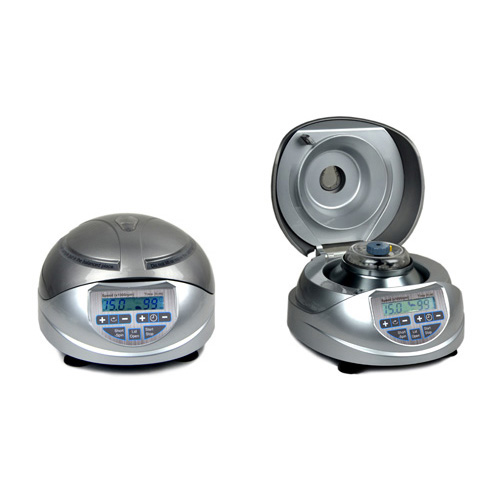Your shopping cart is empty!
MENU
- +
-
Categories+
- Blog +
- Contact Us +
- Login +
- Register +
 Some researchers mistakenly think that RPM and RCF refer to the same thing. Well, while these two units are both used to define the speed of a centrifuge, not knowing the difference between them will lead to disastrous results. You wouldn’t want that for sure! So, to eliminate confusion and preserve the integrity and accuracy of your experiments, here’s everything you need to know about RPM, RCF, and G-force.
Some researchers mistakenly think that RPM and RCF refer to the same thing. Well, while these two units are both used to define the speed of a centrifuge, not knowing the difference between them will lead to disastrous results. You wouldn’t want that for sure! So, to eliminate confusion and preserve the integrity and accuracy of your experiments, here’s everything you need to know about RPM, RCF, and G-force.
RPM vs. RCF: Where Lies the Difference?
RPM (revolutions per minute) basically describes how fast the centrifuge goes. This is the unit centrifuge manufacturers use to inform users how fast the rotor revolves.
On the other hand, RCF (relative centrifugal force) refers to the amount of acceleration or force exerted on the sample in a centrifuge. In other words, it is a function of the rotational speed of the rotor and the radius of the rotation. RCF is expressed in multiples of the standard acceleration due to the earth’s gravitational field (times gravity or x g) so don’t be surprised if you see RCF and “x g” (g-force) used interchangeably in most centrifugation protocols.
Which Should You Use?
Based on the above definitions, it is easy to see that RPM and RCF are two entirely different things. And since different centrifuge machines may have different rotor sizes, using RCF or g-force will give you the right setting for your experiments.
However, some centrifugation protocols provide instructions in RPMs, not in RCF. Also, older centrifuges do not have an automatic converter. This can be a problem since some procedures call for precise centrifugation conditions, and not meeting those conditions will lead to erroneous results. Don’t worry. There is an easy fix to this problem. You just need to convert the given RPMs to RCF (and vice versa) using these formulas:
g = (rpm)2 × 1.118 × 10-5 × r
RPM = √[RCF/(r × 1.118)] × 1 × 105
where g refers to the relative centrifugal force (RCF), r is the radius of the rotor (cm), and N is the speed of the centrifuge in revolutions per minute (RPM).
Note: To determine the radius of your centrifuge rotor, simply take the measurement from the center of the centrifuge rotor to the end of the test tube carrier.
It is interesting to note that centrifugation speed and time may not be as critical in routine sample-handling procedures involving the use of benchtop microcentrifuge. In these cases, it does not matter if you use a faster speed or centrifuge your samples longer than necessary. What’s more important is that the cells, debris or resin are pelleted effectively. As such, many protocols merely use some general guidelines without specifying a particular centrifugal force.
Converting RPM to RCF the Easy Way
While the above equation comes quite handy, you can also make conversions by:
Using nomogram (nomograph, alignment chart, abaque), a graphical calculator that can help you determine the correct speed of a centrifuge rotor to achieve your desired RCF. This will give you an accurate estimate useful for low speed centrifugation applications. You can download and print one for your personal use from these websites – DJB Lab Care, Optics Planet.
1 Comment(s)
if i need rcf 66g for my expiriment , and the centrifuge rcf is 307 4xg , can it produce it or not ??
Sarah, I assume the centrifuge rcf is the maximum rcf, so if it is a variable speed centrifuge then it should be able to do it.Check out the reference table at https://www.btlabsystems.com/Benchtop-Blog/Centrifuge_G-Force to see the best speed depending on the rotor. For example a 6 cm rotor spun at 1,000rpm is 67g, where as a 3cm rotor at 1500rpm is 75g
Leave a Comment